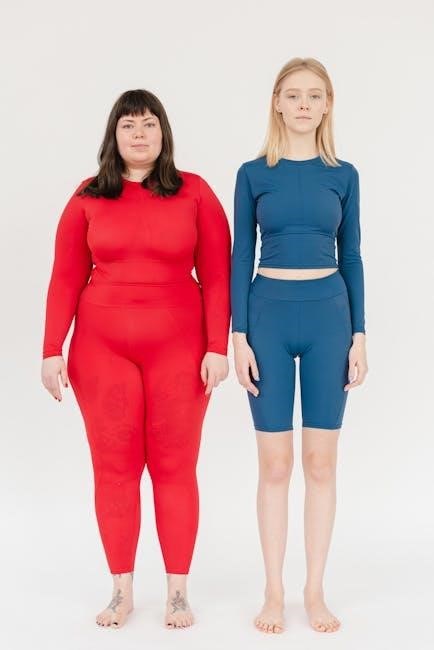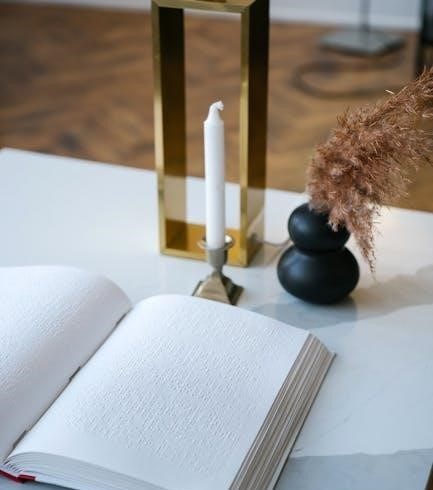Properly fitting waders are essential for comfort, mobility, and functionality. This guide helps determine the right size by considering key measurements like girth, inseam, and boot size. Accurate sizing ensures optimal performance, whether wading in shallow waters or deep streams, by providing a snug yet comfortable fit. Understanding your measurements and comparing them to sizing charts will help you choose the perfect pair of waders tailored to your needs and body type.
Understanding the Importance of Proper Fit
A proper fit is crucial for both comfort and performance in waders. Ill-fitting waders can restrict movement, cause discomfort, and even lead to blisters or hotspots during long outings. A well-fitting pair ensures even distribution of weight, prevents shifting, and maintains insulation. Proper fit also enhances durability, as overly tight or loose areas can stress the material. Additionally, it ensures the waders stay in place, preventing water ingress. By prioritizing accurate measurements and size matching, you can enjoy a more enjoyable and effective wading experience tailored to your body type and activity needs.
Overview of Wader Types and Sizing Variations
Waders come in various styles, including stockingfoot, bootfoot, and waist-high models, each catering to different preferences and conditions. Sizing variations include standard, king, long, and short sizes, accommodating diverse body types. Stockingfoot waders require separate boots, while bootfoot waders have built-in boots. Sizing charts often include girth, inseam, and boot size measurements. Adjustable features like suspenders allow customization. Manufacturers may vary slightly in sizing, so comparing body measurements to specific charts is essential for the best fit. Understanding these types and variations helps anglers choose waders that align with their needs for comfort, durability, and performance.

Key Measurements for Wader Sizing
Measurements include girth (chest, waist, or hips), inseam (crotch to floor), and stockingfoot bootie size. These dimensions ensure a proper fit for comfort and mobility.
Girth (Chest, Waist, or Hips)
Girth refers to the circumference of your chest, waist, or hips, whichever is largest. This measurement is crucial for determining the proper wader size. Proper fit ensures comfort and mobility. Adjustable suspenders allow customization. Measure around the widest part of your torso with a flexible tape measure. Girth measurements are based on body size, not garment dimensions. Align your girth with the sizing chart to find the best fit. Accurate measurement ensures the waders sit comfortably and provide optimal performance. Use this as a starting point before matching inseam and boot size for a complete fit.
Inseam (Crotch to Floor)
Inseam measures the distance from the crotch to the floor, determining the wader’s length. Accurate inseam ensures proper fit, avoiding waders that are too short or too long. Measure without shoes by standing straight, feet slightly apart. Use a flexible tape measure or a string to mark the length. This measurement aligns with standard sizing charts, ensuring the waders reach just above the floor. Proper inseam prevents tripping and discomfort, while allowing adequate mobility. After determining inseam, match it with girth and boot size for a complete fit tailored to your body. This ensures optimal comfort and functionality while wading.

Stockingfoot Bootie Size
Stockingfoot bootie size is crucial for comfort and functionality. It should match your regular shoe size but also consider wading conditions. Measure by comparing to a standard shoe size chart, ensuring a snug fit to prevent blisters. Stockingfoot waders rely on this measurement for the bootie’s length and width. Proper sizing ensures the bootie stays in place, avoiding discomfort during long wading sessions. Some waders offer adjustable features, but accurate bootie size is essential for overall fit. Correct sizing enhances mobility and performance, making it vital to prioritize when selecting your waders for optimal wading experiences.

Men’s Wader Size Chart
Men’s wader size charts categorize sizes into Standard, King, Long, and Short, ensuring a tailored fit for various body types. These charts match girth, inseam, and boot size to provide accurate sizing for comfort and functionality during wading activities.
Standard, King, Long, and Short Sizes
Men’s wader sizes are categorized into Standard, King, Long, and Short to accommodate diverse body types. Standard sizes fit average builds, while King sizes offer broader chest or hip measurements. Long sizes are designed for taller individuals with longer inseams, and Short sizes cater to those with shorter leg lengths. These categories ensure a tailored fit, addressing specific needs like broader girth, longer torsos, or shorter limbs. By matching your body measurements to these size options, you can achieve a comfortable and functional fit for wading activities, whether in shallow waters or deeper streams.
Matching Girth, Inseam, and Boot Size
Accurate wader sizing requires balancing girth, inseam, and boot size. Start with the largest girth measurement (chest, waist, or hips), then align it with your inseam (crotch to floor). Finally, match your stockingfoot bootie size to ensure comfort and proper fit. If measurements fall between sizes, prioritize the most critical dimension for your activity. For example, focus on inseam for mobility or boot size for footwear compatibility. This balanced approach ensures optimal comfort, functionality, and performance in the water, regardless of your body type or wading conditions.

Women’s Wader Size Chart
The Women’s Wader Size Chart provides detailed measurements based on body size, including girth, inseam, and boot size, ensuring a tailored fit for various body styles.
Body Measurements and Fit Guide
Accurate body measurements are crucial for selecting the right women’s wader size. Measure your chest, waist, and hips to determine the largest girth, as this will guide your size selection. Inseam, from the crotch to the floor, ensures the waders are the correct length for your height. Boot size should match your shoe size for comfort and proper fit. Adjustable features like suspenders allow customization, but starting with the right measurements ensures a snug, comfortable fit. Compare your measurements to the size chart to find the best match for your body type and wading needs.
Size Options for Different Body Styles
Women’s waders come in various sizes to accommodate different body styles, ensuring a comfortable and functional fit. Whether you have a petite frame, athletic build, or curvier silhouette, size charts cater to diverse measurements. The girth measurement, which considers chest, waist, or hips, helps determine the best fit. Inseam options address height variations, while boot sizes align with standard shoe sizes. Adjustable features like suspenders allow further customization. While sizing charts provide a general guide, body proportions may vary, so comparing measurements and trying on waders can help confirm the ideal fit for your unique body style and wading preferences.

How to Choose the Right Wader Size
Start by identifying your girth, inseam, and boot size. Use sizing charts to match these measurements, ensuring a comfortable and accurate fit for optimal wading performance.
Step-by-Step Measurement Guide
Measure your girth by wrapping a flexible tape around the largest circumference of your chest, waist, or hips. Next, measure your inseam from the crotch to the floor while standing straight. For boot size, match your shoe size to the stockingfoot bootie size. Use these measurements to consult the sizing chart, ensuring alignment with your body type. Double-check each measurement for accuracy, as proper fit is crucial for comfort and performance. Adjustments may be needed if measurements fall between sizes or vary slightly from chart standards.
Using Sizing Charts for Accurate Fit
To ensure a precise fit, align your measurements with the corresponding wader size on the chart. Match your girth, inseam, and boot size to the closest values listed. Pay attention to whether measurements are based on body size or garment dimensions. Use the chart specific to your gender and body type, as men’s and women’s sizing differs. Double-check your measurements against the chart to avoid sizing discrepancies. This method ensures comfort, mobility, and optimal performance. If unsure, consider consulting the size guide or reaching out to the manufacturer for clarification to guarantee the best fit for your needs.

Troubleshooting Common Sizing Issues
Address fit discrepancies by using adjustable features like suspenders or belts. Ensure accurate body measurements match the chart for optimal comfort and functionality in the water.
Adjustable Features for Customization
Many waders come with adjustable features like suspenders, belts, and straps to tailor the fit to your body. These elements allow for fine-tuning girth, shoulder comfort, and waist alignment. Adjustable suspenders can be customized to accommodate different torso lengths, ensuring the waders stay secure without restricting movement. Similarly, belts and straps help distribute weight evenly, enhancing comfort during long wading sessions. These customizable options are particularly useful for addressing discrepancies in measurements, ensuring a snug yet flexible fit that adapts to your unique body shape and activity level.
Addressing Discrepancies in Measurements
When measurements don’t align perfectly with sizing charts, prioritize the most critical dimension, such as girth or inseam. If girth exceeds the chart, consider the next size up for comfort. For inseam discrepancies, opt for adjustable features or customizable boots. Stockingfoot bootie size should match your shoe size closely to avoid blisters. If multiple measurements fall between sizes, choose based on the most restrictive area. For significant discrepancies, consult customer support or try before buying, if possible, to ensure the best fit and performance in the water.



